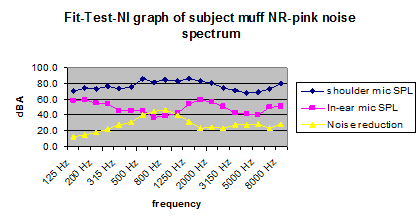Noise
Real Time In Ear Dosimetry
For hearing protectors to be used more effectively, we need a better way to evaluate
their effectiveness in the field and we need to get miners to wear them when needed.
The goals of this research are to validate a better fit testing method to use real-time
internal dosimetry to evaluate actual noise reductions during mining, and to determine
if delayed and/or instant exposure indicators will influence miners’ appropriate
use of protectors.
Significance of the study
Until effective acoustic engineering controls can be developed for the highly challenging conditions of mining, hearing protectors must be used more effectively if the mining industry is to prevent continuing noise-induced loss of miners’ hearing. This study will employ a modified “Microphone in Real Ear” (MIRE) method both to fit-test protectors and to evaluate effectiveness and dose of the same protectors in actual use. Since the field measurements will involve minute by minute dosimetry in the ear canal and at the crest of the shoulder, they will provide the information needed to answer some of those most critical questions concerning hearing protector effectiveness:
- do MIRE fit tests accurately predict on the job insertion losses,
- do NRR values adequately predict protector performance on the job,
- what proportion of miners’ exposures are due to inappropriate use of protectors and how much is due to protectors that do not adequately protect,
- do muffs inadequately protect because of insufficient clamping force (especially for miners with narrow faces), and
- do some protectors work substantially better than others due to either better transmission losses or to better wear patterns by miners? Most significantly, the study will allow rigorous testing of two behavior modification strategies based on instant and delayed feedback to the miners about their exposures and thus the efficiency of their HPD use.
Background / Problem
At present exposure levels, one in four workers will develop a permanent hearing loss as a result of mining coal (Prince, 1997). According to the National Institutes of Health (NIH, 1990), approximately one third of all hearing loss can be attributed to noise exposure, and “occupational hearing loss is the most common cause of noise-induced hearing loss (NIHL).” NIHL is more prevalent in the mining industry than other industries with 65% of the mining workforce experiencing substantial impairment by the time they retire. About 90% of coal miners will have a hearing impairment by age 52, a compelling statistics when compared to the 9% rate for the general population (NIOSH, 2004).
Noise Levels in Mining:
Mining is noisy, producing pervasive high exposures (Watts, 1998). Crushing rock
and coal with huge machines in confined spaces is a potent combination (NIOSH,
2004). Mine Safety and Health Administration (MSHA) inspectors found in the period
of 1986-1992 that approximately 25% of coal miners’ daily noise doses exceeded
MSHA’s PEL of 100% (equivalent to 90 dBA for 8-hours). As is discussed in Preliminary
Studies, our own extensive sampling in longwall coal mining has found similarly
high exposures.
MSHA Standards:
As should be expected, MSHA and mine operators take the noise exposures extremely
seriously. MSHA’s Title 30 CFR 62.100 states “the purpose of these standards is
to prevent the occurrence and reduce the progression of occupational, NIHL among
miners.” Although noise levels are often well above 90 dBA, it is well understood
that even if average exposure levels were reduced to the 85-90 dBA range, there
would still be a 25% excess risk of developing NIHL. (NIOSH, 1998). Hence, the
emphasis on hearing protection for miners exposed to levels not just above 90 dBA,
but in the 85-90 dBA range, also. Indeed, it would be better if actual doses reaching
miners’ ears were below 80 dBA (Burkes, 2003).
 Fit Test – Cap Mount Muffs
Fit Test – Cap Mount Muffs
- Amplifier and external speaker
- National Instrument analyzer
- Noise Source
- Pink noise & actual noise
Method: (MIRE)
- Thus the plug that the subject fits is not identical to the plug that will be worn on a day-to-day basis.
- as has been done for research purposes as well as the development of a product for regular use in industry to monitor hearing protector effectiveness (Berger, 1986; Burks and Michael, 2003).